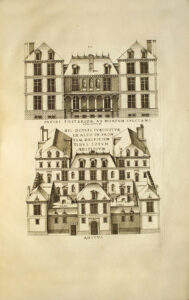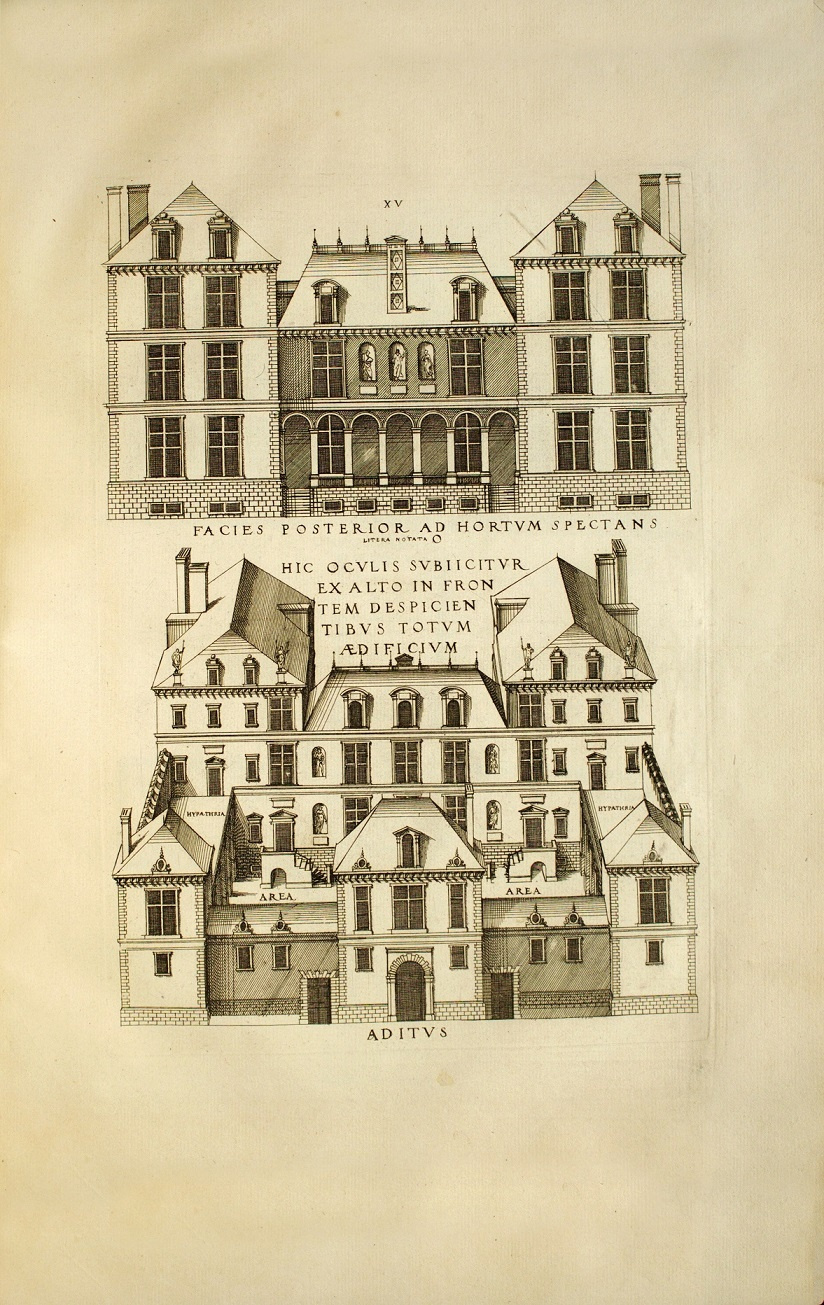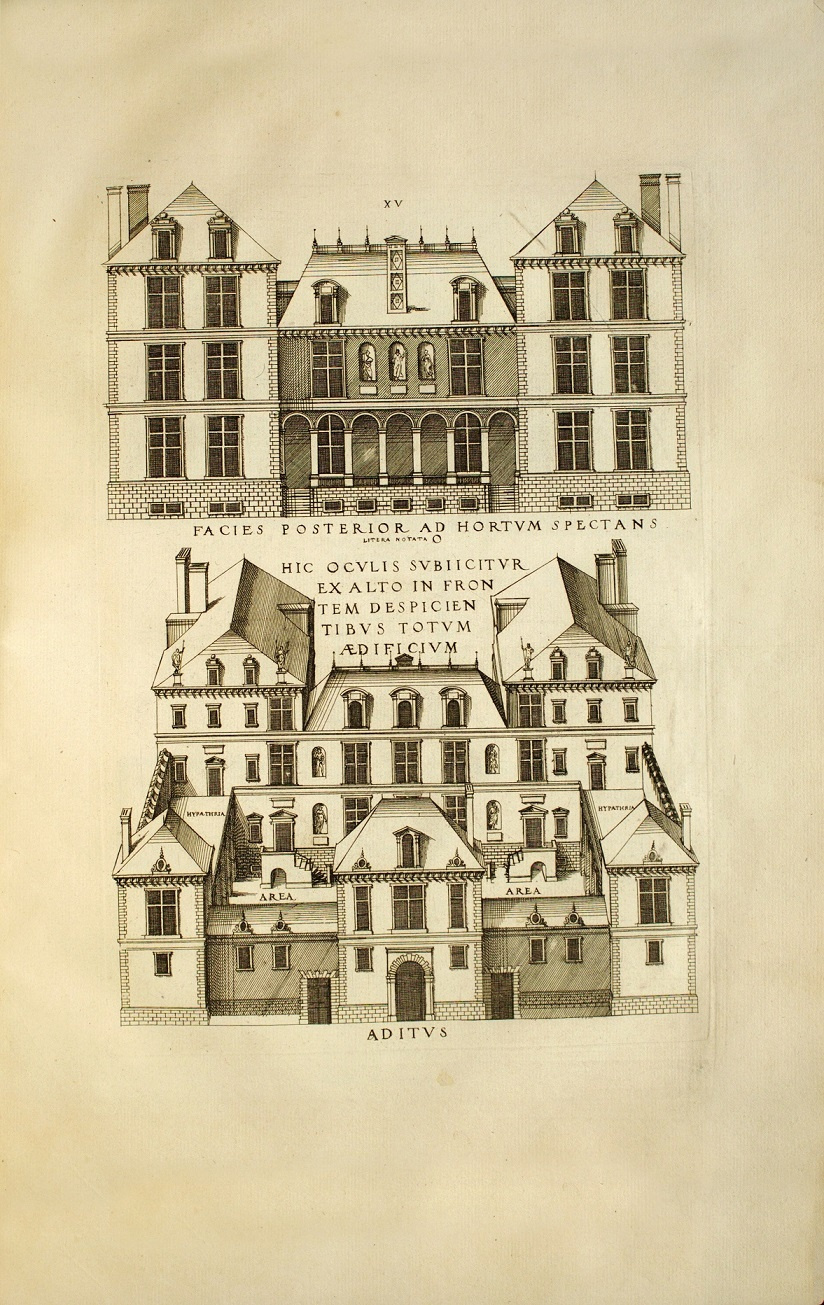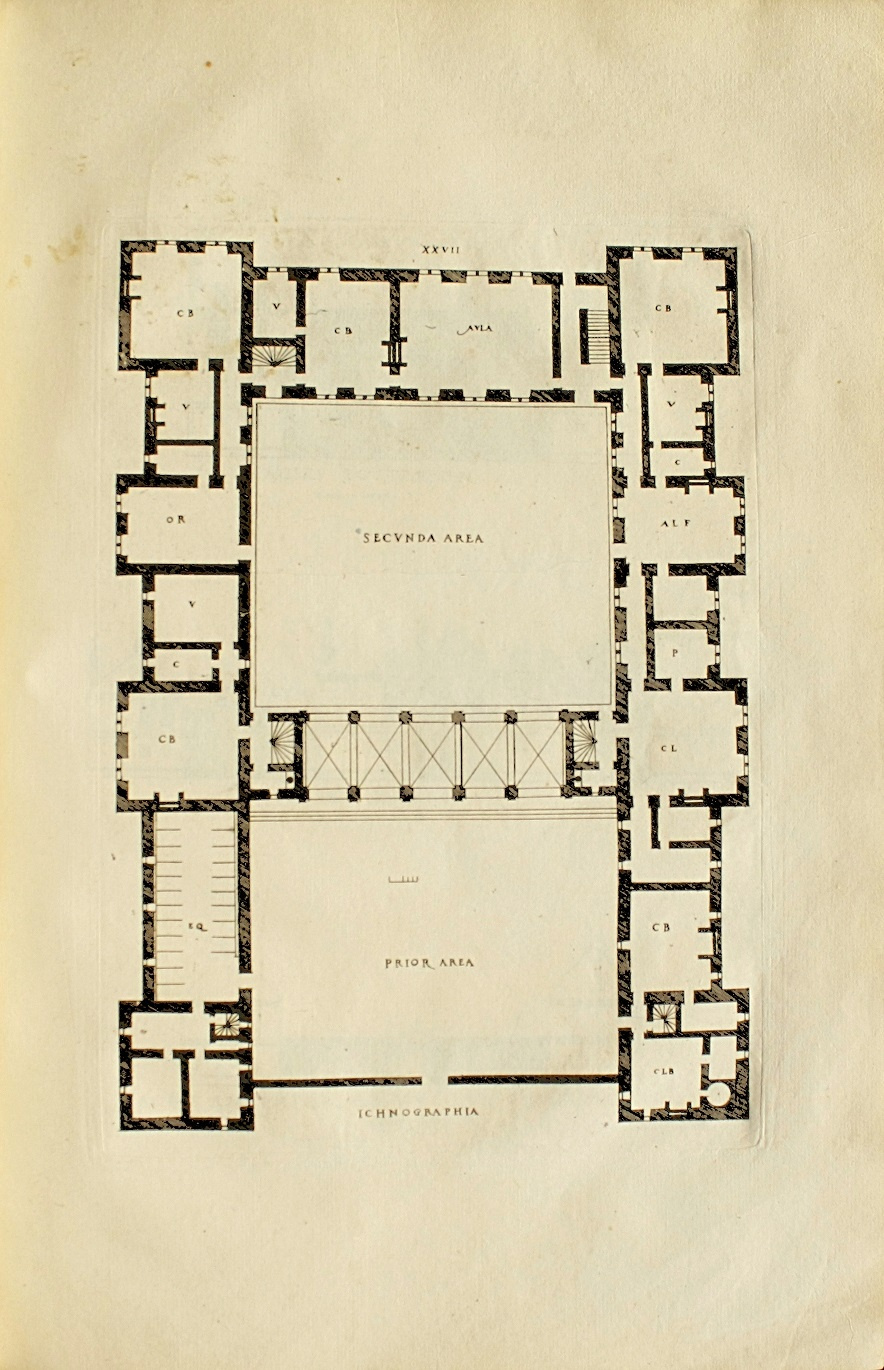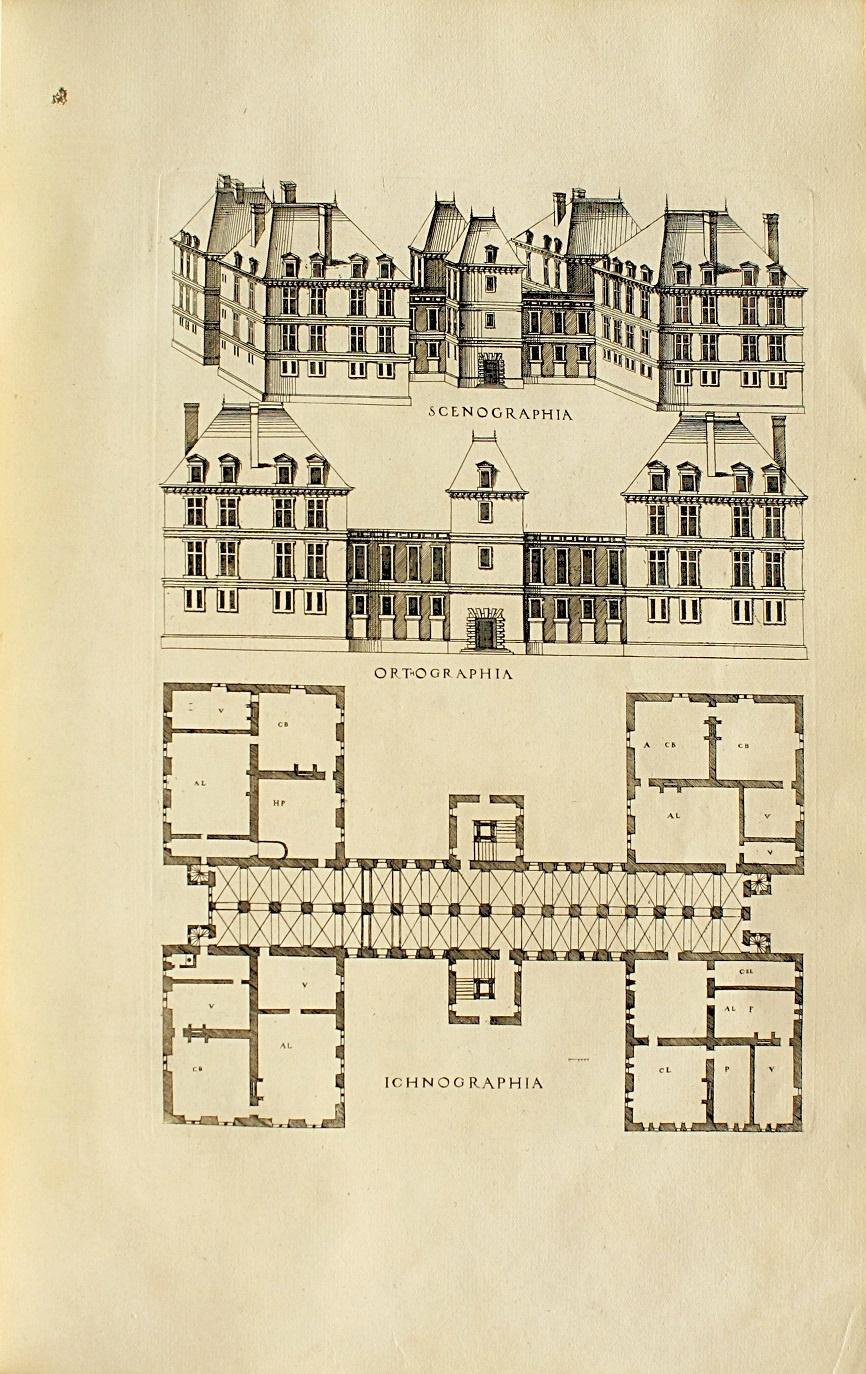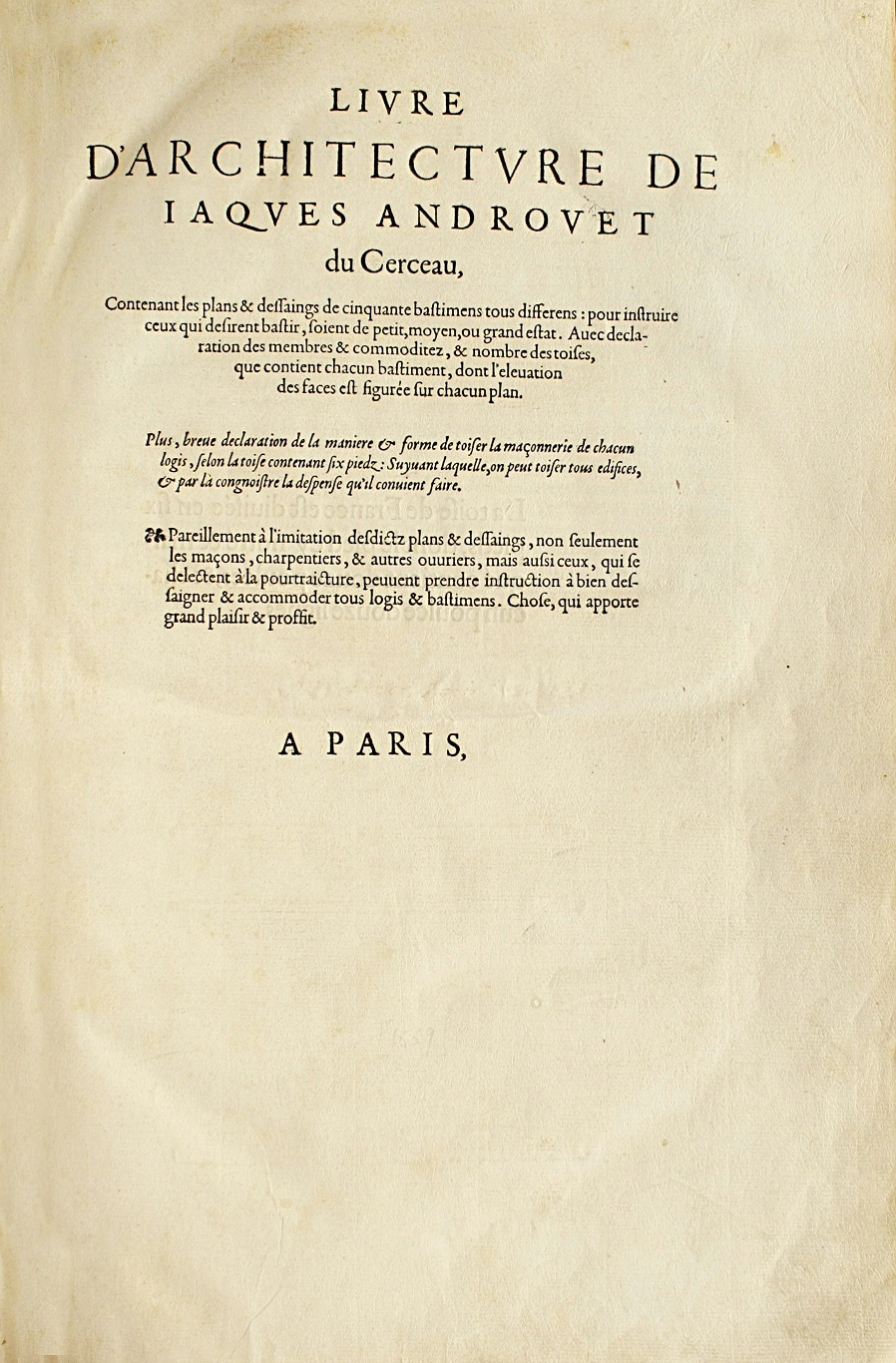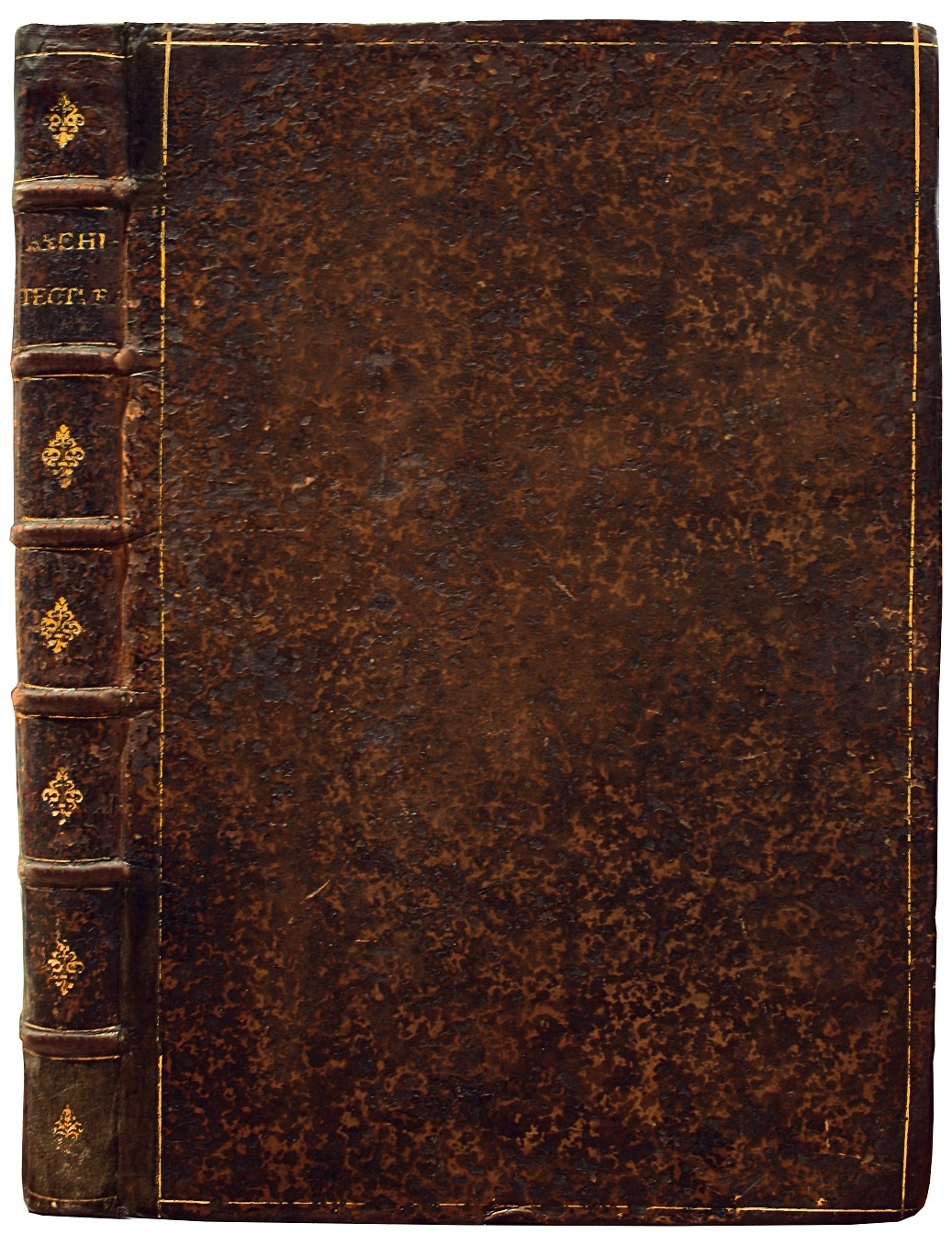-[Bound with:] – Francini, Alessandro. Livre d’Architecture contenant plusieurs portiques de differentes inventions, sur les cinq ordres de Colomnes.
Paris, Melchior Tavernier, 1631.
– [and:] Serlio, Sebastiano. Extraordinario Libro di Architettura di Sebastiano Serlio, architetto del Re Christianissimo.
Venetia, Giovambattista & Marchio Sessa fratelli, 1557.
Folio [397 x 260 mm] of: I/ (16) ll., 69 full-page engravings; II/ (4) ll., 41 engravings; III/ (6) ll., 48 engravings (out of 50). Bound in full brown granite-like calf, gilt fillet on the covers, spine ribbed and decorated with gilt fleurons, red mottled edges. A few old restorations. 18th century binding.
I/ Very rare first French edition of the first “book of architecture” by Androuet du Cerceau, published at the same time as the first Latin one (“De architectura”).
Harvard, French, n°22; Brunet, I. 279 and Suppl. I, 423; Brun, Le Livre français illustré de la Renaissance, p. 110; Catalogue of the Avery Architectural Library, p. 286; Destailleur, Notices sur quelques artistes français (Paris, 1863), p. 21-22, 37; Geymüller, Du Cerceau, p. 310; pas dans Murray.
“First edition in French, very rare. Its 69 copper-engravings contain 171 subjects about 60 buildings.” (Brun).
In his dedication to King Henry II, Du Cerceau writes: “… I have composed, cut & printed up to fifty Buildings, all different, to serve to princes, lords and simple people of your Kingdom..”
Androuet, nicknamed du Cerceau, because of his house’s sign, considerably embellishes Paris with the help of his two sons.
“La Croix du Maine says that the Pont-Neuf was started in the month of May 1578, by the young du Cerceau; this construction, interrupted by the civil wars, wasn’t achieved before 1604, by Guillaume Marchand. MM. Haag think that it was the son again who built, in Paris, the Hôtels Carnavalet, des Fermes, de Sully, de Mayenne, de Bretonvilliers, etc. Dargenville credits these buildings to the old Androuet, but he adds that this latter had two sons, who were skilful architects, and he particularly praises Jacques for his talent to draw ancient and modern buildings.
On the other hand, we know by L’Estoile that in 1585, during the persecutions time against Protestants, Androuet Cerceau, an excellent architect of the King, preferred to lose his master’s friendship than to go to mass, and after having left his house that he had newly built in Pré-aux-Clercs, he took his leave of the king, begging him to “find bad that he was so faithful to God than he was and will always be to His Majesty”.
This information matches the information of the biographers, who report that Androuet the elder was forced to become an expatriate because of religion, and that he died abroad; but if this last fact is real, we have to admit that it was Androuet the younger who was appointed by Henry IV in 1596, to finish the Louvre gallery.”
II/ First edition of Alexandre Francine’s “Livre d’Architecture”, great royal hydraulic engineer, illustrated by the famous Abraham Bosse.
Brunet, II, 174; Fowler 126.
Alexandre Francine (1571–1648) comes from a great family of hydraulic engineers of the Renaissance from Florence, the Francinis. He was, with his brother Thomas, intendant of the waters and royal fountains from 1623 to 1784. Both are behind the greatest technical and artistic realizations of the 17th century as regards the use of waters in gardens. Their collaboration with the great architects and gardeners of the time enabled the creation of the most beautiful royal gardens.
The Livre d’Architecture was published by Melchior Tavernier. He had Abraham Bosse as an apprentice, and this latter probably engraved the 40 plates of this book.
“Even if the name of the latter doesn’t appear on the frontispiece, and that the one of Melchior Tavernier is on every others (there are forty plates with the frontispiece) either with his excudit only, or, for the plates II and IV, with the mention that he is the engraver, there is hardly any doubt that Bosse is the author of all these plates, Tavernier’s role being reduced probably to the direction of the work.” (B.n.F. exhibition catalogue)
The illustration is composed of a magnificent suite of 40 engraved plates representing monumental doors, archs, triumphal arcs… in a style combining both French mannerism and Italian baroque.
III/ First Italian edition of Sebastiano Serlio’s “6th book”, architect of the King of France, completing the large series of architectural treatises of the author.
Cicognara, Catalogo ragionato, I, p. 122; Avery, A Memorial Library of Architecture, p. 942; Brunet, V, 304.
The Extraordinario Libro is considered as the “Livre VI” in the Serlio’s suite of architectural treatises. It was first published in its French translation in Lyon in 1551.
Sebastiano Serlio (1475–1554) was initially called by Francis I at the French Court, as a consultant, in the construction of the castle of Fontainebleau. Then he became chief-architect at Court. He distinguished himself as much for his built work as for his written ones, and his illustrated architecture treatises were very influential, as mush in France, as in Holland and England.
This collection of models is composed of 48 magnificent engravings drawn by Serlio and copper-engraved by Corneille de La Haye. The author offers here models of “rustic” and “delicate” doors, preceded by a text in Italian.
Very beautiful collection of three famous works of architecture composed by the greatest masters of the Renaissance, and beautifully illustrated.
Provenance: ex libris of Herbert Lord Visco Windsor and Baron Montjoy, Arthur & Charlotte Vershbow, and M. L. Borromeo Aresse – M. Favia del Core.
